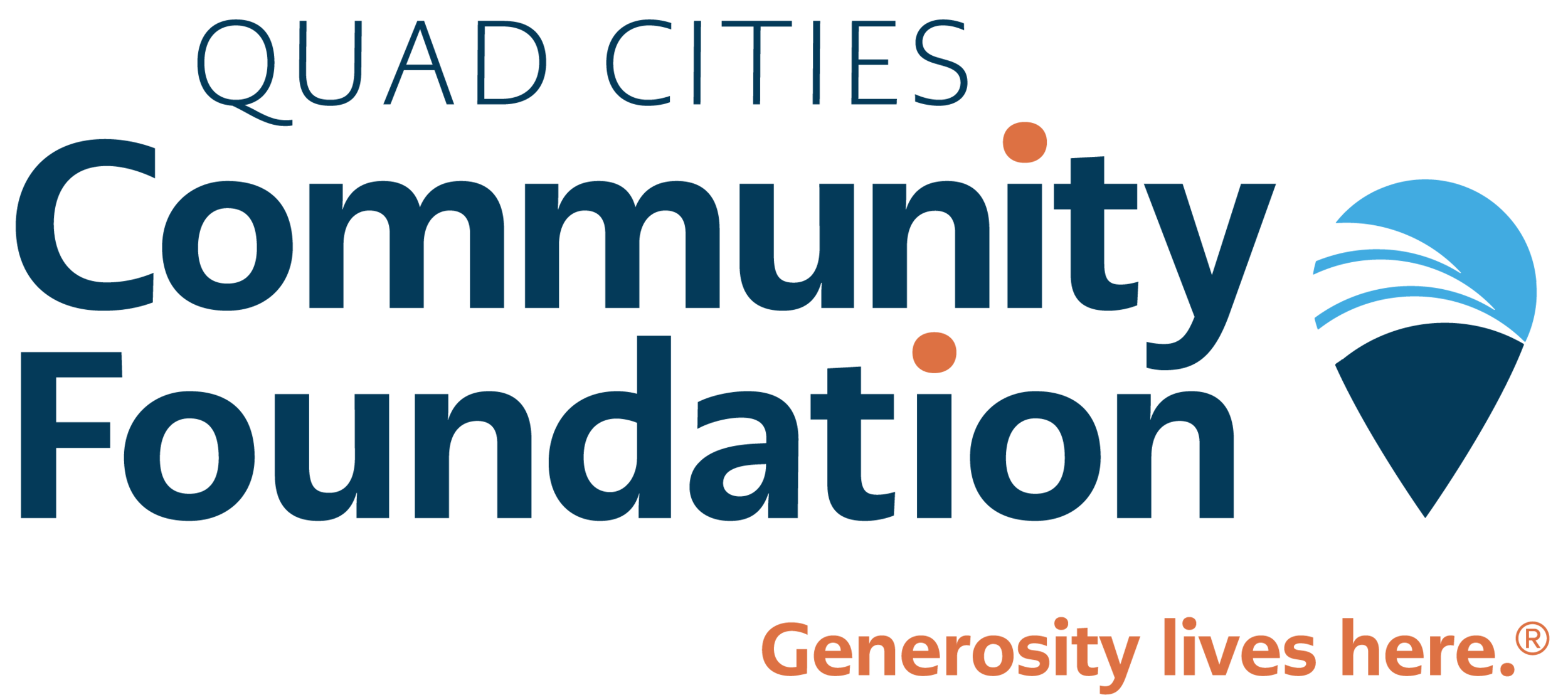Grantmaking
Discretionary Grantmaking Approaches
Through unrestricted gifts, field of interest funds, County Endowment dollars (Iowa only), Illinois Gives dollars (Illinois only), and other sources, your affiliate gains the opportunity to make grants to your community. Depending on source and the level of discretion arranged with the donor and recorded in the fund agreement, you can choose from many discretionary grantmaking approaches. The approach you choose will depend on the situation at hand and the results you want to achieve. The Quad Cities Community Foundation is here to help you identify and select the best option.
General Grantmaking Principles
Regardless of the grantmaking approach you choose, several core principles of grantmaking apply.
Focus: Consider what you want to accomplish with the grantmaking approach. Set goals. Be clear in sharing them with others. Learn more
Communication: Keep in touch and build relationships with your communities, applicants, and grantees. Learn more
Transparency: Be open about what, how, and why you make funding decisions so your applicants and your community trust you. Learn more
Proportionality: Consider the effort required of your applicants as compared to the funds available and the potential impact and make applications “right-sized.” Learn more
Outcomes: Plan for evaluation of your grantmaking approach and of completed projects you fund. Learn more
Components of a Grantmaking Approach
When deciding on a grantmaking approach, we need to be able to decide on and clearly communicate to our committees and our applicants these key components, each of which builds upon the other:
Purpose
What is the intention of this grantmaking approach?
Eligibility
What are the baseline requirements that will allow you to consider an applicant?
What activities/purposes will you not fund?
Evaluation Criteria
Which qualities will you look for that help you select the best applicants to fund?
Amount
What is the total grant pool?
What is the minimum/maximum for each grant?
Timeline
When does the application become available?
When is the application due?
When will decisions be announced?
Process
How will applicants apply?
What content will be required on the application? (And why is that information needed?)
Who will assist them with questions about the content or technical aspects of the application?
Reporting
When will reports be due?
What content will be required in the report?
Proactive Grantmaking
Proactive grantmaking approaches typically arise because the grantmaker has done some work to identify community needs – perhaps through a community needs assessment, awareness of local news, attendance at community meetings, or other local involvement – and is choosing to target their resources in some way.
Funder-Initiated Grants –These grants are made without application by potential grantees. Instead, the grantmaker determines its goal, identifies a grantee partner, and then offers a grant for a particular purpose. That offer is usually the beginning of a conversation and negotiation, not the end. It’s important to be sure that the grantmaker’s goal aligns with community priorities and grantee strengths.
Example: The grantmaker decides it wants to help provide support and good role models for children in the area. It talks with the local Big Brothers Big Sisters program staff to learn about their needs and ultimately provides a grant to support ongoing training and support for the program’s Bigs.
Request for Proposals – Closely linked to Funder-Initiated Grants, a Request for Proposals (RFP) process arises from grantmaker priorities. The grantmaker develops a document that describes the project it wants to fund (including goals, objectives, and planned outcomes) and invites organizations to apply. The grantmaker usually screens applicants with a shortened application called a Letter of Inquiry (LOI) and invites full applications from a few. The RFP may be distributed broadly, or targeted to certain organizations.
Example: The grantmaker decides it wants to help provide support and good role models for children in the area. It identifies specific goals and sends the document to Big Brothers Big Sisters, Boys and Girls Clubs, and several local churches that run mentoring and tutoring programs. It screens responses, accepts two full applications, and funds both of them.
Challenge Grants – Challenge grants encourage organizations to raise funds from other sources, in order to earn a proportional grant from the funder (1:1, 2:1, 1:3, etc.). Challenge grants may be targeted for a particular purpose, such as endowment building, or used to incentivize behavior, such as bringing board members to governance training.
Example: The grantmaker decides it wants to promote endowment building for local organizations. It puts up $10,000 and offers to provide $1,000 each to up to ten organizations to create an endowment fund when they raise $9,000.
Responsive Grantmaking
Responsive grantmaking approaches react to the needs of the local community – usually identified by those organizations applying for grants.
Application-Based Grants – Also called competitive grantmaking, this approach creates a defined grant program with specific criteria, process, and timeline. Applications are submitted by nonprofits or other charitable organizations and considered by a grants committee. Funds are awarded or denied based on those applications. This approach can allow for a grantmaker to learn about and support a broad spectrum of issues, or it may be more tailored to a specific purpose.
Emergency Grants – Many funders set aside a portion of their annual budget to address emergency needs in the community. This approach allows funders to quickly come to the aid of organizations that might otherwise not be able to provide critical services to the community. Download the Emergency Grants document.
